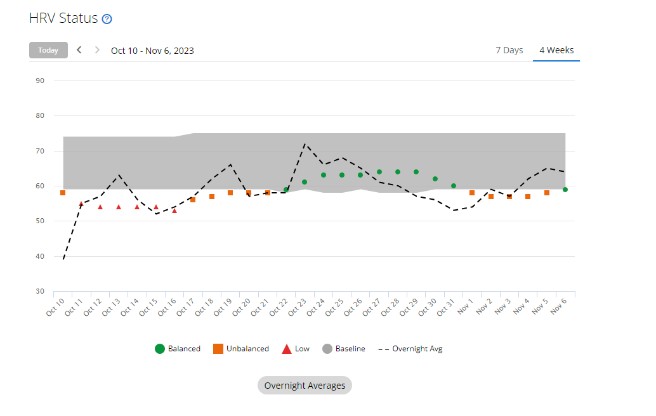Looking for thoughts from athletes and coaches experienced in this area, do you regularly modify your training plan based on morning recovery metrics (such as Garmin Training Readiness, HRV, Body Battery High, and Recovery Time, or the equivalent from Oura and Whoop)? As an example, let’s say you have a threshold run on the calendar for today as part of this week’s training schedule. You wake up and your Garmin Morning Report tells you have a Training Readiness in the low range (1-25) and/or your overnight HRV has dropped below your 7 day average. Do you change your plan for today’s training? Or do you power through like you used to? I am wondering if there are improvements to be gained by making modifications based on these metrics or if they should only be considered as a validation for when I feel really lousy, and otherwise just ignore the variation in recovery metrics and stick to the plan. Have you had good experiences where the recovery metrics drove training decisions and this seemed to be an improvement (greater training adaptation, less illness, more and faster race finishes) over the old fashion way of just listening to your body, and bringing a strong mental game to just show up and do the work.
As context, I have been using HRV and Training Readiness for about 18 months, all of which I was not training for a race. I’m trying to figure out for my races in 2024 if Training Readiness and HRV are useful inputs for training decisions or more of a distraction that could lead to not train as hard as I have in the past (When Garmin tells me I have “3 days†of recovery time after a couple of hard workouts, it tends to make me take the foot off the gas for a little while.)
